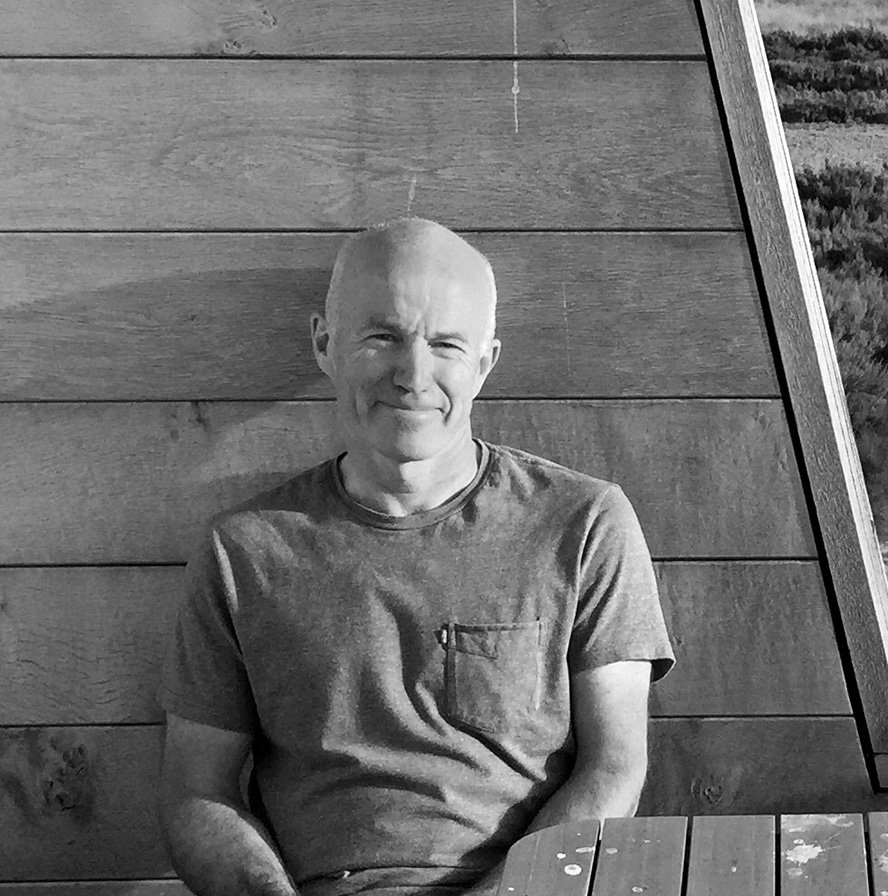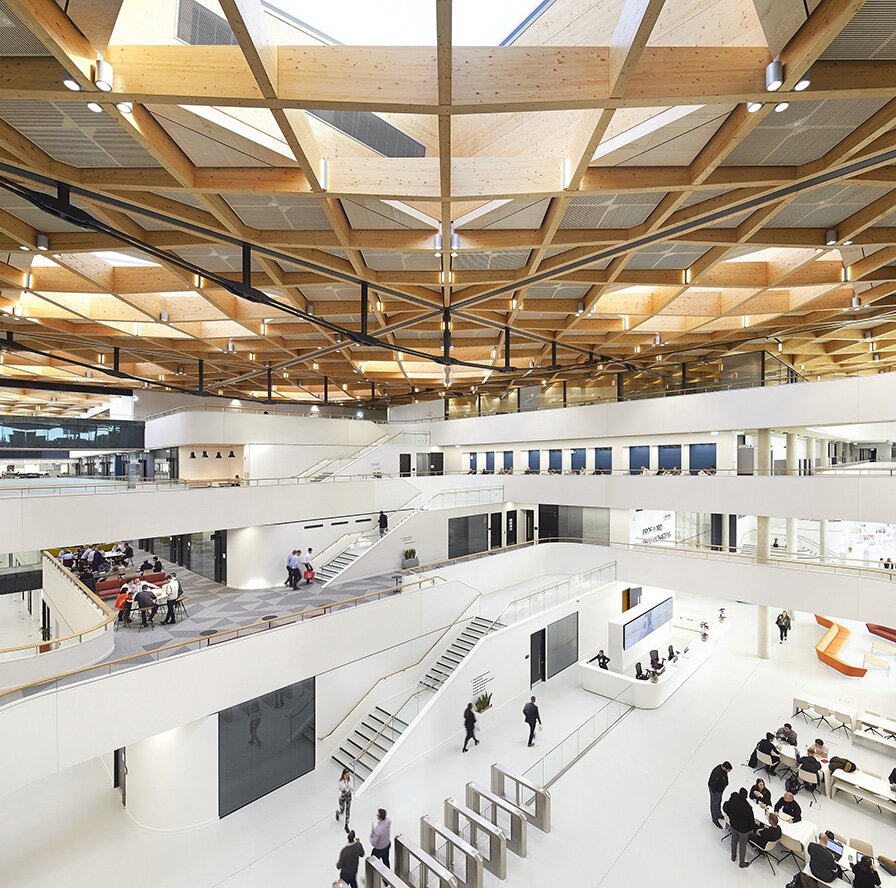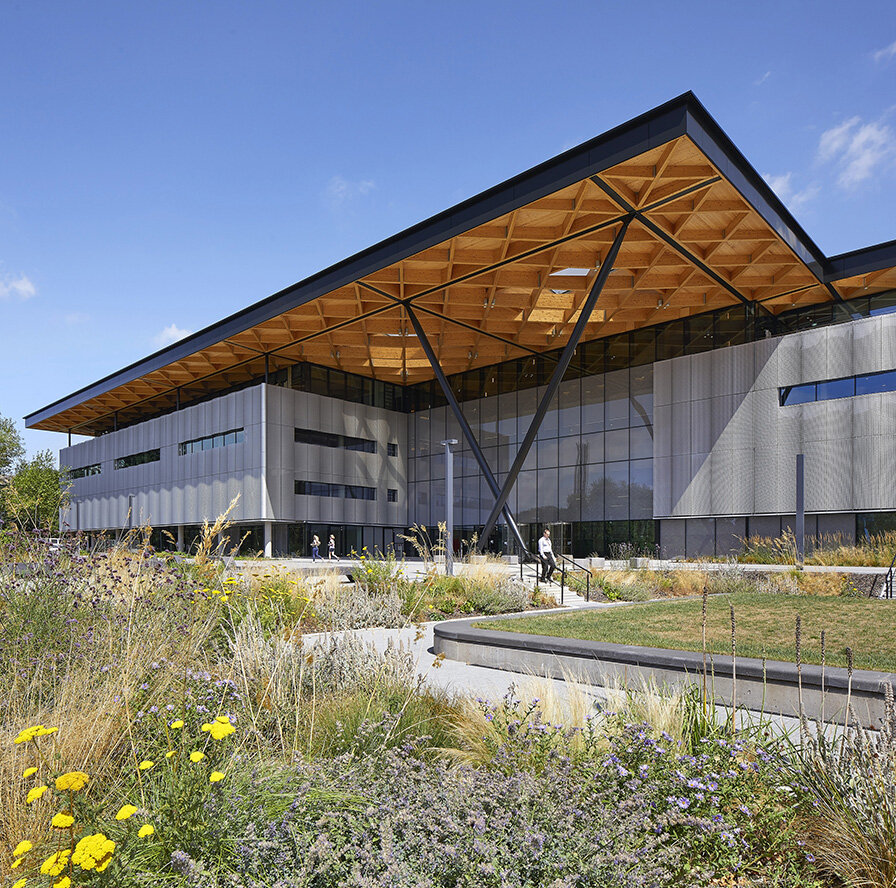Things that have never been done before: Roddy Langmuir on the NAIC
Q&A with Roddy Langmuir
It’s been said of Cullinan Studio that we ‘specialise in things that have never been done before.’ In this series of Q&As we invited the Studio’s partners to share their experiences of innovative projects and ways of working, and how the insights gained can inform the future of architecture.
In this post we hear from one of our three Practice Leaders, Roddy Langmuir…
What have you done with Cullinan Studio that’s never been done before?
The timber roof of the Prof. Lord Bhattacharyya Building, which houses the National Automotive Innovation Centre (NAIC) at the University of Warwick was a unique opportunity.
It’s one of the largest timber roofs in the world, but its real significance lies in what it represents, for the automotive industry and for partnerships between academia and business – and indeed for any major collaborative enterprise.
What was your involvement in the project?
I led a large design team on the NAIC project, a unique partnership between WMG at the University of Warwick, Jaguar Land Rover and Tata Motors, coming together to drive innovation towards a new green future for mobility
Our brief was to design a brand new kind of building; a national innovation centre for the UK, connecting academic and manufacturing research and inspiring a new generation of automotive engineers.
The great challenge was to do something that really has never been done before: to create a home for collaboration and the open sharing of ideas between different parties in an industry renowned for secrecy and the fierce protection of intellectual property.
What makes the roof particularly significant?
The roof is significant – and symbolic – in two ways. First, timber isn’t a material you normally associate with the automotive industry. Using a natural, sustainable material in a building made for designing cars signals a new direction for the sector. It’s a recognition that we all still need to move about in the 21st century, but that we have to think differently about how we do it in a world of net zero goals and circular economy thinking. The roof is visible from every part of the building, so there is a constant reminder of that new approach.
Second, the roof is symbolic of something really quite radical in NAIC’s approach to research facilities, which are normally highly secretive, hidden away in industrial parks and screened by trees and fences. NAIC is the polar opposite. It’s in the heart of the university campus, and where most research buildings say ‘Go away’, NAIC’s message is ‘Come on in’.
The whole ethos is one of openness and sharing, and we pushed that as far as you can go while still protecting IP. Each of the partners – Jaguar Land Rover, Tata and WMG – share common spaces, but also visitors can come right into the centre of the building. We questioned the need for privacy – was it visual, or acoustic, or could it be managed by the use of moveable screens and other solutions ensuring privacy only happens where it’s absolutely needed. But the way the building is designed – with that roof always visible – means that wherever or whoever you are, you feel part of the same shared place, working towards common goals.
What does it mean for the future?
NAIC is an exemplar of collaborative working: both in the process that led to the design, which involved Cullinan Studio facilitating cooperation between all the different parties, and in the nature of the building itself. That’s something that can apply far beyond the automotive industry, to other kinds of research facilities, to private-academic partnerships and to better ways of working in any sector.
The Prof. Lord Bhattacharyya Building was completed in 2019 and has won a RIBA National Award, RIBA Regional Building of the Year, Building Awards Project of the Year, the BCO National Award for Innovation, the Wood Awards Strutural Award, and the AIA UK Design Award for Sustainability.






